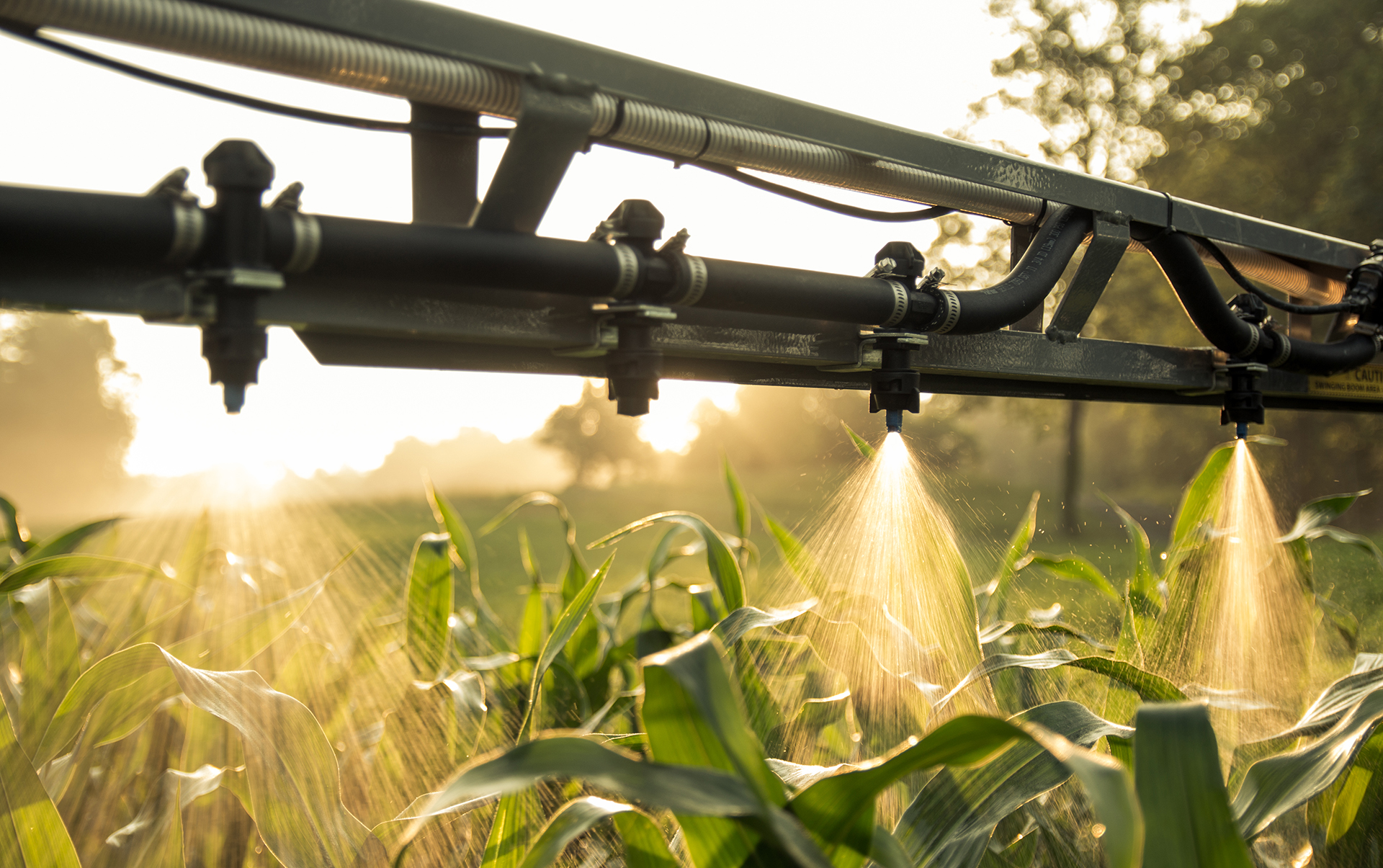by Lowell Graybill, CropCare Product Specialist

When it comes to selecting the best spray nozzles to use on your sprayer, it’s likely that most would agree that it’s no simple task. To start with, the number of spray tip manufacturers is numerous, including TeeJet, Delavan, Hypro (Pentair), Green Leaf, CP, and others. Next is the myriad of styles, including flat fan, hollow cone, extended range, and streaming, just to name a few. Then, it’s necessary to consider characteristics, such as spray angles, air induction, multiple patterns, and pre-orifices. Another consideration to keep in mind is the material itself, whether it’s brass, aluminum, stainless steel, ceramic, or poly. That’s a lot of factors to consider!
What to Consider When Selecting a Sprayer Nozzle
To make heads and tails of the complex decision, it’s essential to start with the basics and to enlist other key people in the mix. When determining the nozzle to use, you’ll need to know what your chemical rep recommends and, in some cases, stipulates. Due to the nature of the product you are spraying, nozzle patterns and drift control may determine where to start. Product labels also help to determine whether a product you are applying is a contact, systemic or soil applied product. This will become important when determining which nozzle will provide the best coverage and droplet size for the intended results. And finally, be sure to establish a clear understanding of the rate to be applied.
Your spray equipment rep should be able to help you understand the specifications and capability of your sprayer, including pump capacity, pressure ratings, boom height and nozzle spacing, volume capabilities, and control system features.
Sprayer charts can be helpful in the selection process. Here are some TeeJet examples showing types of nozzles suitable to different applications, along with links to corresponding sizing charts.
Keeping in mind each of the characteristics and requirements already mentioned, you’ll need the following key pieces of information before even looking at nozzle charts: rate (gpa), speed (mph), pressure (psi) and nozzle spacing (inches). Without any one of these, it will be a shot in the dark to make the best choice. The charts themselves can be somewhat confusing, so it’s in your best interest to work with your sprayer chemical rep, equipment supplier, and county extension office to ultimately make the best choice.
For all your sprayer and equipment needs, contact the helpful team at CropCare.


